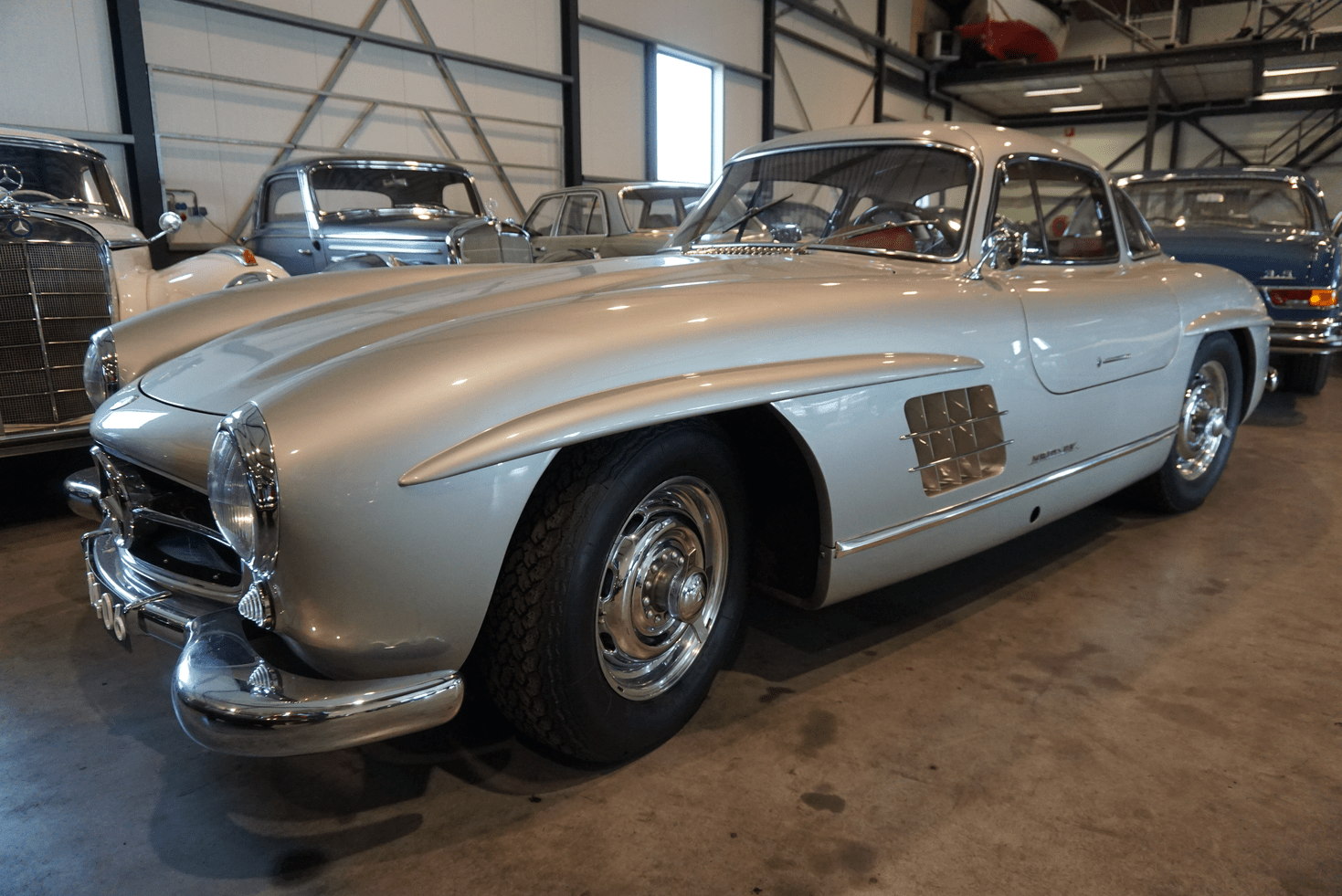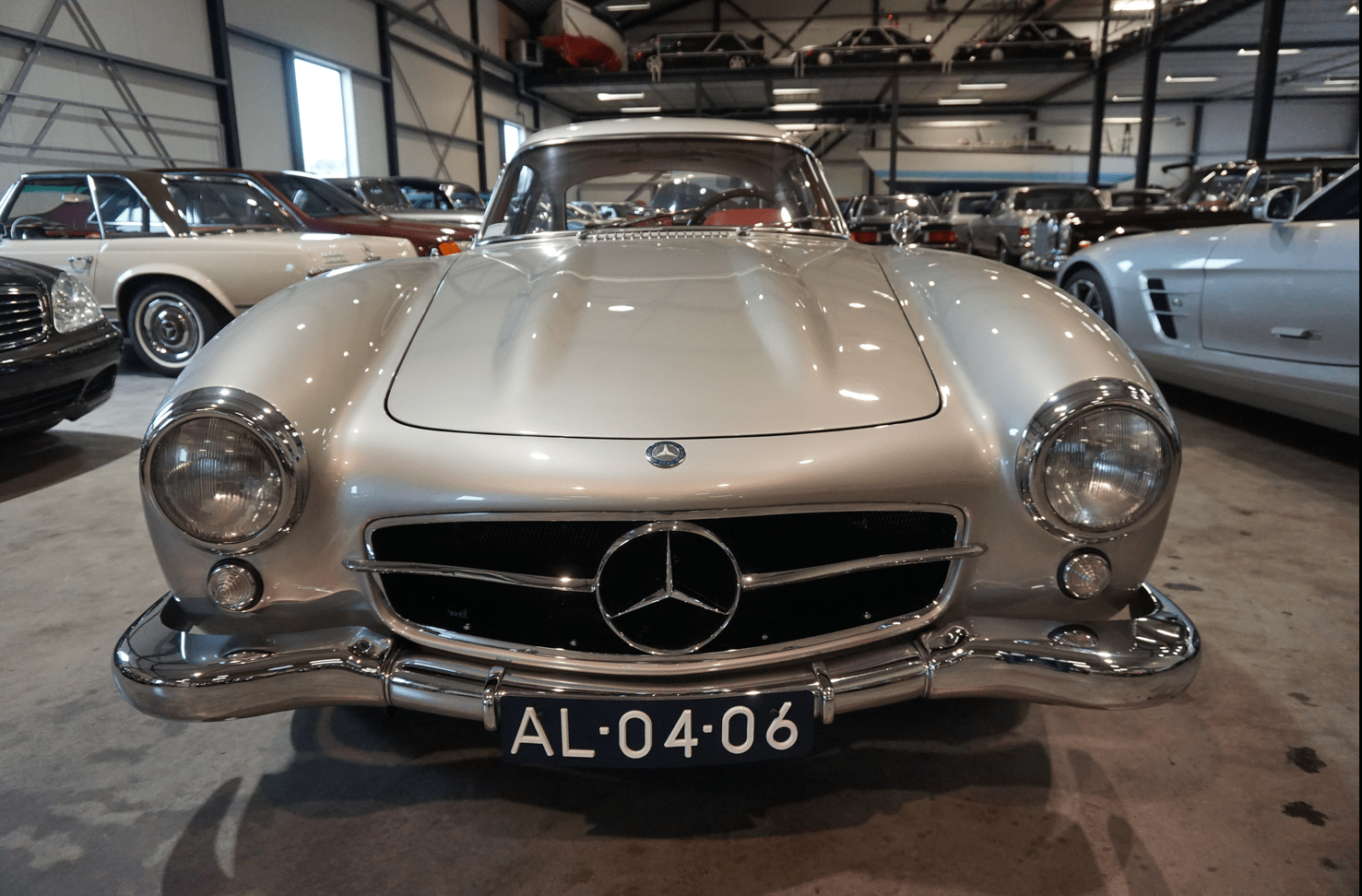Introductie en historie Mercedes-Benz W198

Introduction and History of the Mercedes-Benz W198 Series (300 SL)
The Mercedes-Benz W198, better known as the 300 SL, is one of the most celebrated sports cars in automotive history. Produced between 1954 and 1963, the W198 combined revolutionary technology with elegant design and motorsport pedigree. It was available in two distinct forms:
The 300 SL Coupé (1954–1957) — famous for its gullwing doors
The 300 SL Roadster (1957–1963) — a refined open-top evolution of the Coupé
The 300 SL wasn’t just a fast car for its time — it was a symbol of German engineering excellence, postwar optimism, and performance innovation.
Motorsport Origins
The “SL” in 300 SL stands for “Super-Leicht” (Super-Light), and the car’s roots lie in racing:
In 1952, Mercedes-Benz returned to international motorsport with the W194 300 SL race car, achieving major victories at:
24 Hours of Le Mans (2nd place)
Carrera Panamericana (1st & 2nd)
Mille Miglia (2nd)
Encouraged by this success, and prompted by U.S. importer Max Hoffman, Mercedes-Benz greenlit a road-going version: the W198 300 SL Coupé, launched in 1954.

W198 I – 300 SL “Gullwing” Coupé (1954–1957)
The Gullwing Coupé stunned audiences when it debuted at the 1954 New York Auto Show.
Key Features:
Iconic gullwing doors — required due to the high, rigid tubular spaceframe chassis
3.0L inline-6 (M198) with mechanical direct fuel injection by Bosch — a world first for a production car
Top speed up to 260 km/h (160 mph) — one of the fastest cars of its time
Lightweight construction: aluminum bonnet, doors, and boot lid; ~80 full-aluminum bodies made
Technical Highlights:
Power: 215–240 hp, depending on version
0–100 km/h (0–62 mph): approx. 8.8 seconds
Rear swing axle, drum brakes (early cars), optional Rudge knock-off wheels
Production:
1,400 units built (incl. 29 aluminum-bodied examples)
Considered the first true supercar of the postwar era

W198 II – 300 SL Roadster (1957–1963)
The 300 SL Roadster replaced the Gullwing Coupé in 1957, offering improved usability and comfort.
Improvements Over Coupé:
Conventional doors (due to a revised lower frame design)
Fully independent rear suspension with single-joint swing axle for better handling
Optional disc brakes from 1961 onwards
Optional removable hardtop and improved interior appointments
Performance:
Same M198 engine, later uprated to 240 hp
Slightly heavier but still highly capable
Top speed: ~250 km/h
Production:
1,858 units built between 1957 and 1963

Total Production Summary – W198 Series
| Variant | Years | Units Built |
|---|---|---|
| 300 SL Coupé | 1954–1957 | 1,400 |
| 300 SL Roadster | 1957–1963 | 1,858 |
| Total | 3,258 |



Global Impact & Cultural Legacy
The W198 was an international sensation, particularly in the United States, where over 80% of cars were sold.
Driven by celebrities and racing legends alike — including Clark Gable, Juan Manuel Fangio, Sophia Loren, and Paul Newman.
The 300 SL remains a centerpiece of prestigious car collections and auctions today, with prices often exceeding $1 million.
Engineering Firsts
First fuel-injected production car
First use of a spaceframe chassis in a road car
One of the first Mercedes-Benz vehicles designed with aerodynamics in mind
Early versions featured vented seats, special competition options, and even lightweight versions for racing clients
Legacy
The 300 SL paved the way for future Mercedes-Benz sports cars:
W113 “Pagoda” SL (1963–1971)
R107 SL, R129 SL, and beyond
The “SL” nameplate endures to this day as a symbol of performance luxury
The W198 300 SL is regularly cited among the greatest cars of all time
Summary
The Mercedes-Benz W198 series was far more than a sports car — it was a rolling statement of postwar innovation, prestige, and engineering might. Whether in Gullwing form or as a refined Roadster, the 300 SL was and remains an icon that helped reestablish Mercedes-Benz as a leader in global automotive excellence.
